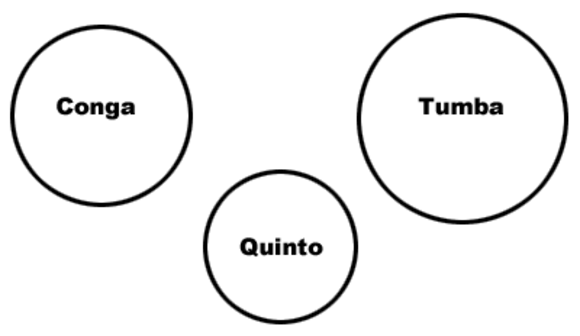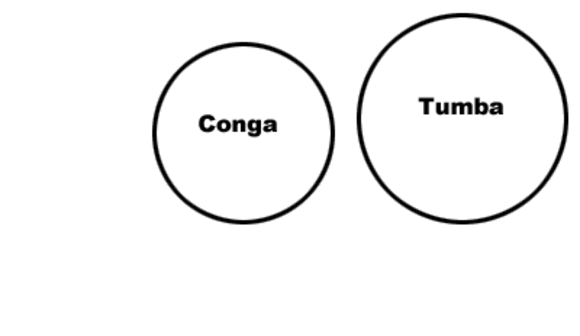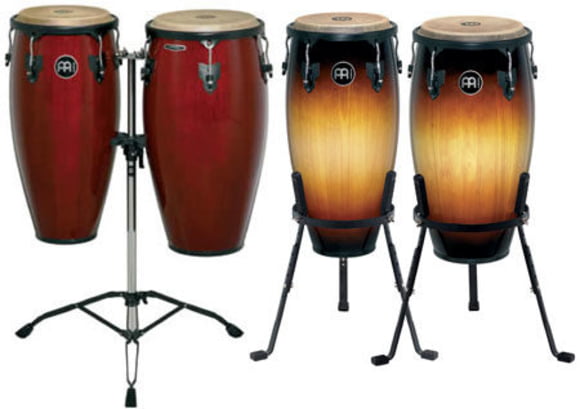6. Arrangement of the Drums
Congas are often sold in pairs: a conga and a tumba drum. Arranging the drums is normally done as follows. The conga (medium-sized) drum is placed directly in front of the player and the tumba is placed to the right.
The quinto, when used, is placed between the conga and the tumba in a triangular formation:

Notice that the quinto drum is now placed directly in front of the conguero.
Stand or Sit?
Traditionally, congas were played sitting. One wedges a drum between the knees, either the conga or quinto, depending on whether playing two or three drums. When performing on stage many percussionists prefer to stand, in order to be seen and to move more freely. This can also affect the sound as the bottom of the drum is open when stand-mounted but effectively closed when placed on the floor.
There are two main types of stands for congas. One type suspends the drum from brackets on the shell and the other type sets the drum into the stand.
If you choose to sit and play, heres a hint:
congas sound louder and can be heard more clearly if positioned diagonally so that the bottom is not closed and the sound is projected towards the audience. However, this only works for one drum at a time (the conga or the quinto depending on the size of your setup). If holding the drum for long periods between the knees is tiring, a strap or a belt may help to support it. A bungee cord attached at the brackets near the head can work too.




